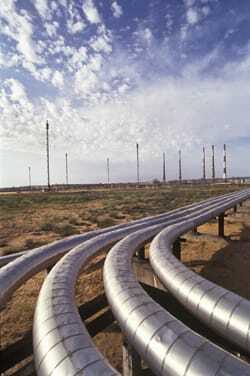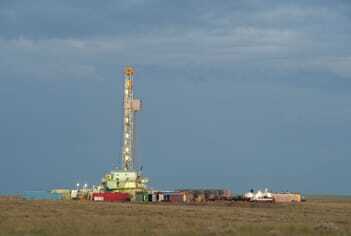America’s post-recession growth is being led by economic sectors that lagged behind the overall economy early in the millennium, from 2000 through 2008. Where, when, and how this transformation will occur has been hotly debated in the political arena, with both political parties eager to take credit for job growth while blaming their opponents for the pace of economic recovery. Grosvenor, an international property group, decided to study the situation from a different angle. We wanted to know what the situation means for global real estate investors, but our predictions should be of interest to locally and regionally focused investors as well.
Our study is not the first to forecast an economic recovery in the U.S. heartland. For example, Joel Kotkin, an urban futures professor at Chapman University and author of The Next Hundred Million: America in 2050 (2010, Penguin Press), has predicted that U.S. economic growth over the next decade will refocus from the East and West coasts to the middle of the country due to a resurgence in agriculture, energy, and manufacturing.
Grosvenor Research studied Kotkin’s thesis, along with other trends, and concluded that Kotkin is on the right track—but that coastal metro areas will continue to play a major role in the recovery. While the Midwest, Gulf Coast, and Southeast regions are participating in the post-recession rebound, we expect that trade, technology, and services will continue to benefit the nation’s cities on the East and West coasts.
To dig deeper, Grosvenor’s study examined key sectors expected to drive U.S. economic growth over the next decade, and the geographic areas that will benefit. The analysis provides a useful framework for decision making that is customized to institutional real estate investors.
Thinking between the Coasts
Investors targeting U.S. real estate have long flocked to the primarily coastal, so-called gateway metro areas of New York City, Boston, Chicago, San Francisco, Los Angeles, and Washington, D.C., driving up prices and compressing cap rates for institutional-quality real estate. Other markets, however, have seen far less interest—particularly since the recession’s end. But conventional wisdom is about to be turned on its head. Gross domestic product (GDP) growth in the United States is expected to trend upward beginning in mid-2013 and reach a near-term peak in 2014–2015. And the list of metro areas expected to outperform over the next decade includes some new names.
Of course, not all of these new-growth metropolitan areas will be suitable for institutional real estate investors who look for scale, data coverage, and liquidity. Only 50 to 60 U.S. metro areas currently have the real estate data coverage necessary for investors to make informed decisions. And for real estate investors, absolute growth is more important than percentage growth. It does not matter if a city’s economy grows five times faster than the national average if it adds only 2,000 jobs; the absolute number of new residents and new employees is what generates demand for living units and office space.
Agriculture, energy, manufacturing, trade, technology, and services are the six sectors projected to lead the U.S. economic recovery over the next decade. We ultimately examined five sectors (skipping agriculture because it does not directly affect urban growth) and the locations these sectors will benefit: the Great Plains, Mountain West, Southeast, and Gulf Coast, as well as the longtime favorites, the East and West Coast metro areas.
Energy: A New “Gold” Rush
| A well drilling rig works in the eastern plains of Colorado to reach the Niobrara shale formation. |
The development and widespread adoption of hydraulic fracturing (fracking) in natural gas and oil production, as well as horizontal drilling, is transforming the U.S. energy industry. After years of low activity, energy production is expanding rapidly, in turn catalyzing growth in other parts of the economy. The country’s petroleum exports have roughly tripled over the last five years, although they are only one-third the volume of imports. These new extraction techniques allow the domestic energy industry to work the nation’s rich shale formations. The following are the largest currently active deposits:
- The Marcellus and Utica shale fields (running through western New York, Pennsylvania, and eastern Ohio);
- The Bakken shale field (in the northeast Great Plains);
- The Barnett shale field (in Texas and parts of Oklahoma); and
- The Haynesville shale field (in east Texas and Louisiana).
Ongoing growth in domestic oil and gas production from these fields is expected to benefit such metro areas as Pittsburgh, Denver, Dallas, and Houston.
Domestic energy production has pushed down natural gas prices, in turn supporting growth in U.S. manufacturing. Domestic gas prices are now the lowest in the world, this past year dropping below $2 per million Btu (MMBtu) and currently hovering around $2.50 per MMBtu. In contrast, Europeans pay about $12 per MMBtu for oil-indexed pipeline gas, while Japan pays $16 per MMBtu for imported liquefied natural gas.
Labor costs in the United States have plummeted since the recession, while escalating at double-digit rates in China. Because labor and energy are the most significant manufacturing input costs, U.S. manufacturing has become much more competitive relative to that in other countries. Domestic manufacturers are opening factories and expanding production lines, while foreign firms are offshoring work to the United States.
Which metro areas will reap the benefits of manufacturing growth? Conventional wisdom would point to the midwestern Rustbelt cities. Although these cities’ economies are indeed improving, they are coming back from very severe recession. Unemployment in these areas is declining, but from elevated levels, while local population growth is very low or even negative. By way of example, Detroit’s automobile-focused economy began adding jobs in 2010 after nine consecutive years of net losses. Metropolitan-area unemployment has declined as a result, from a late-2009 peak of 16.6 percent to 11.9 percent by December 2011—still 3.2 percentage points above the U.S. average. Metro Detroit’s population is projected to continue eroding, but more slowly than in the past; it is projected to shrink by 0.4 percent per year (losing another 75,000 residents in all) over the next decade. The only major midwestern city expected to benefit from the region’s increased manufacturing of automobiles and durable goods is Chicago.
Much of the growth in auto manufacturing in the United States is now taking place in the Southeast, where car makers are taking advantage of right-to-work laws, low costs for land and labor, and state government incentives. While auto plants have located in rural sections of South Carolina, Alabama, and Mississippi, Atlanta gains indirectly from their growth; as the de facto capital of the Southeast, Atlanta provides many of the region’s financial and service needs.
Furthermore, cars and trucks are not the only goods made in the United States. Despite defense-industry downsizing that began during the 1990s, the growth of the commercial aircraft and aerospace industry is forecast to benefit Los Angeles and Seattle. L.A. is poised to benefit because of the Jet Propulsion Laboratory in Pasadena and CalTech’s presence as well as aerospace/defense companies that still number among the metro area’s largest—most notably, Northrop Grumman Corp., with 21,000 jobs, and the Boeing Company, with 11,500 jobs. And Seattle owes its expected growth to Boeing, which, with more than 72,000 employees, continues to be the metro area’s largest employer by a considerable margin.Los Angeles also is home to a thriving garment industry and a technology cluster with links to the city’s preeminent entertainment industry. Metro Chicago, Seattle, and Los Angeles are slated to capture one-third of all new U.S. manufacturing jobs over the next five years.
Trading Up
Now we come to the three “carryover” sectors that drove economic growth over the last decade and are slated to outperform over the next: trade, technology, and services.
Trade, particularly with Asia, grew substantially over the last decade. Propelled in part by China’s 2002 admission to the World Trade Organization, total U.S. goods trade jumped from about $1 trillion in 1992 to more than $3 trillion in 2011. This total is expected to approach $5 trillion by 2016, with changes in both the mix of traded goods and the ports handling them. Major metropolitan areas expected to benefit from trade growth include the following:
- Houston, New Orleans, and other Gulf Coast port cities that handle bulk goods such as petroleum and agricultural products. Houston continues to augment its role as the nation’s petrochemical-industry powerhouse.
- West Coast container ports of Seattle, Los Angeles/Long Beach, and Oakland, which bring in consumer goods from Asia. Many of these goods are locally consumed.
- Interior metro areas such as Chicago, Dallas, and Atlanta, whose locations at nodes of the nation’s multimodal transportation network and sizable warehouse inventories make them key distribution hubs.
One factor that will affect U.S. trade patterns is the opening of a widened Panama Canal in 2014. This project will double the canal’s capacity and allow it to accommodate the latest generation of “post-Panamax” ships. This new option is expected to increase East Coast shipping—possibly at the expense of West Coast ports—but only at locations that have dredged their channels and prepared for larger vessels, including New York and New Jersey, Baltimore, and Miami. Other U.S. ports are planning or undertaking upgrades, but will not be ready when the canal reopens; the major ones include Houston, New Orleans, and Tampa, Florida. Despite the boost from canal traffic, expansion of trade at East Coast ports will be dampened by the continued economic doldrums in Europe, depressing that continent’s appetite for U.S. goods.
The technology sector was first to emerge from the 2008–2009 recession and continues to grow rapidly, driven by social media and a stream of products from Apple. Biotech also is expected to thrive over the next five years, primarily in San Francisco, San Diego, and Boston. Growth in the high-tech industry will continue its longstanding pattern of occurring on the coasts, primarily benefiting Seattle, San Francisco, San Jose, New York, and Boston; the sole exception is Austin, Texas, which is home to Dell.
Services Surge
The service sector, which accounts for almost a third of today’s U.S. employment base, is expected to contribute almost half the nation’s new jobs over the next five years. Our study focused on growth in professional and business services because they are the main source of demand for office space. The education and medical service category (“eds and meds”) experienced less volatility during the recession, but it will not generate as many new jobs through mid-decade as professional and business services will.
Unlike the regionally focused sectors discussed so far, growth in the service sector will benefit major metropolitan areas throughout the country. The following metropolitan areas are expected to host the largest number of new professional and business service jobs over the next five years: New York City; Boston; Washington, D.C.; Philadelphia; Houston; San Francisco; and Los Angeles. In addition to these coastal cities, the metro areas of Atlanta, Chicago, Dallas, Denver, and Phoenix are expected to be leaders.
For Grosvenor, this economic study represents the first step in a three-step process designed to identify target markets for real estate investment over the next five to ten years. Step two will involve evaluation of each economically promising metro area’s real estate performance, in terms of both fundamentals and investment activity. In the final round, we will select for metropolitan areas with “magnet attributes” such as high education and income levels, an outsized population of millennial residents (aged 20 to 29), and a desirable quality of life. One might guess the ultimate results of this investigation—but then again, the numbers may tell a different story.




